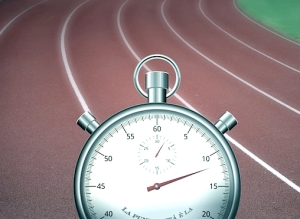Recently I read a post addressing how to work the rotator cuff muscles. The Author stated, with much confidence and authority, that when you are performing standing horizontal external rotation, in hopes of training the teres minor muscle group, you are in fact NOT training them. You are likely training the rear deltoids, as they have a greater mechanical advantage in that position and in fact are designed to move the shoulder in that manner. The teres minor (one of the four rotator cuff muscles) cannot be trained (according to the author), they are there for support, and you can’t make them stronger. I am not going to comment on the accuracy or wisdom of that post but I will admit I did “like” it and thank the author for bringing up a rarely addressed point. That is, we are not in charge of exactly which muscles are active in any given motion. The part of the brain that says “I am working my rotator cuff muscles” IS NOT the same part of the brain that is in charge of actually getting those muscles to move (the cerebellum, motor cortex, and others). In fact, much of the time, what we picture as “the brain”, isn’t directly involved in activating muscles at all. Sometimes, a sensory nerve, (one in your foot), is stimulated by an external factor (perhaps you are stepping on a tack) and sends a direct signal to the motor nerves. Said motor nerves immediately send a signal down to the leg muscles (Abort! Abort! Pull back!!), causing you to pull your foot back to avoid putting full bodyweight onto that tack. Simultaneously, other parts of this “reflex arc”, called interneurons, also send a signal (like a memo) up to the brain, letting it know what happened (yes, this really happens). Hence, even though the foot pulled away, the tack still partially stuck and pain occurred, the movement was not initiated consciously. The brain will file that “memo”, which will influence how we behave around tacks going forward.
Different parts of the nervous system, depending on what the task at hand is, the external environment, and the internal wiring of our bodies all play a role in activating muscle. That’s why, strength coaches, when working with athletes, often prescribe exercises based on planes of movement, or by important movements identified in that athlete’s sport. Take a forehand ground stroke in tennis. To get into position, I will have to shuffle to one side (lateral movement, frontal plane), get my racquet back and then accelerate the racquet head through the ball (transverse plane). If the ball comes in low, I will crouch down in a quasi lunge (sagital plane) as I swing to make sure my return clears the net. I am not consciously thinking about which muscles to activate as I perform, I’m thinking about getting the ball back, preferably where my opponent isn’t. I am using practiced motions to do that. If I want to strengthen the muscles involved in these motions (whichever ones they are), my training program needs to include exercises in all three of these planes, similar to the forehand motion. My program shouldn’t attempt to pick out a few muscles that I happen to know the names of (ooh, my rhomboids) and do exercises that I think are working them (multi-retro scaption).
Now, before anyone flies off the handle in contention, we ARE in charge of which exercise we are performing. We can choose an exercise that involves a certain muscle group. We also can adjust the angle of the resistance, our body position, the load, rest period, and volume. Some folks even like to consciously “squeeze” muscle groups at certain points as they move through the exercise to help bring about a specific effect. I am not validating the practice of “conscious squeezing” during exercise, just saying we can do it.
So, in summary, muscle groups simply do not work in isolation. It doesn’t matter what muscle group we want to work, all of the ones that are necessary for the movement will work (in healthy people). Laboratory tools such as magnetic resonance imaging and techniques such as (electromyography) have been aiding sports scientists in learning exactly what muscles are being used in a given action. This remains an active area of research in sports science. Current publications continue to address exactly which muscles are firing and to what degree in common exercises, such as the sit up.
For now, I leave you with the following points:
- The muscle(s) being worked in a given action are determined by multiple factors, none of which include what we are vocalizing.
- Analyzing the specific actions of a sport and prescribing exercises that mimic these actions are a useful way to assure the right muscles are getting stimulated.
- Muscles do not work in isolation; they work synergistically and antagonistically with other muscle groups.
- Keep an open mind, there is still more to learn about even the most common exercises.
Hope this helps and thanks for reading!
P.S. As far as I know, I made up the term “multi-retro scaption”












